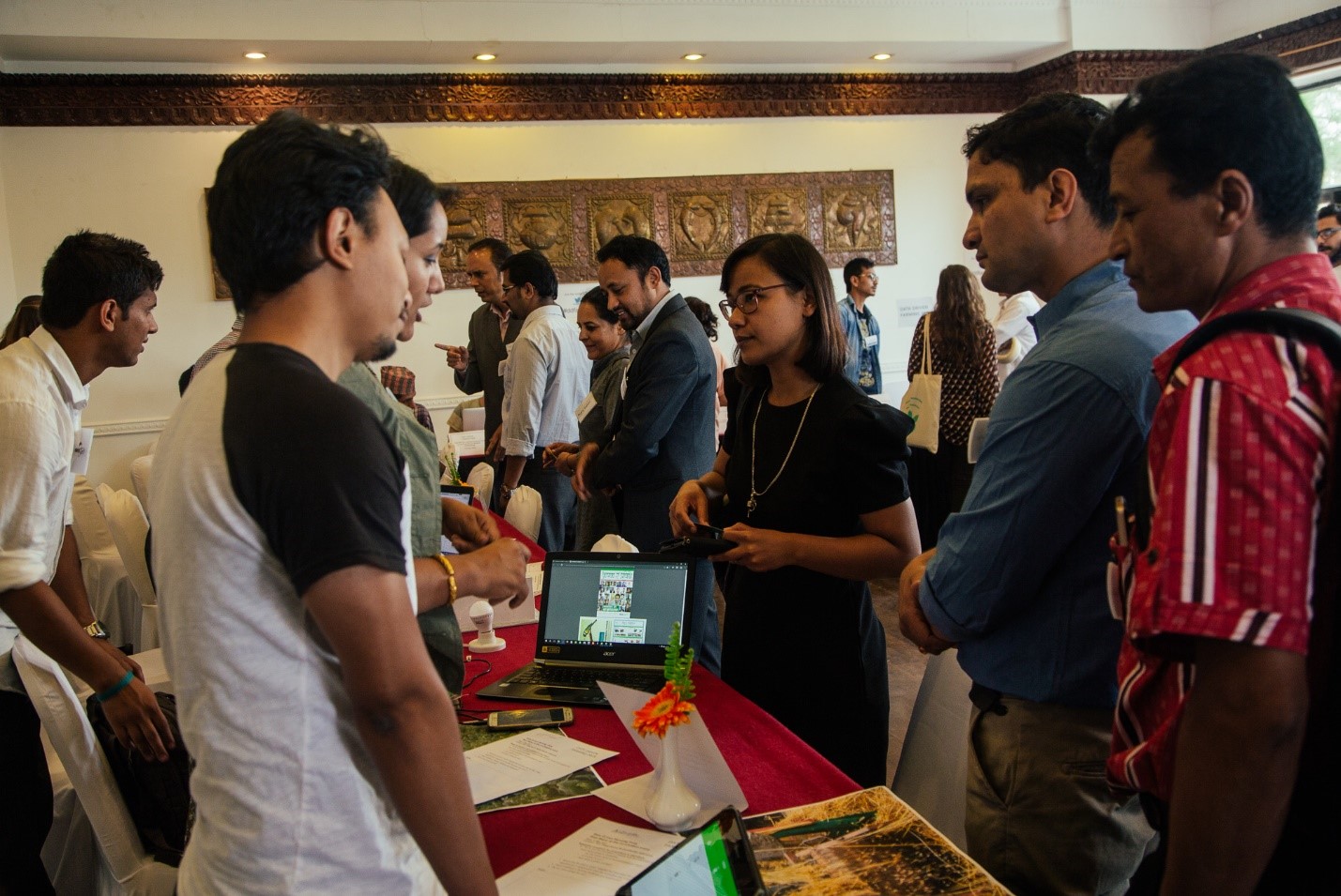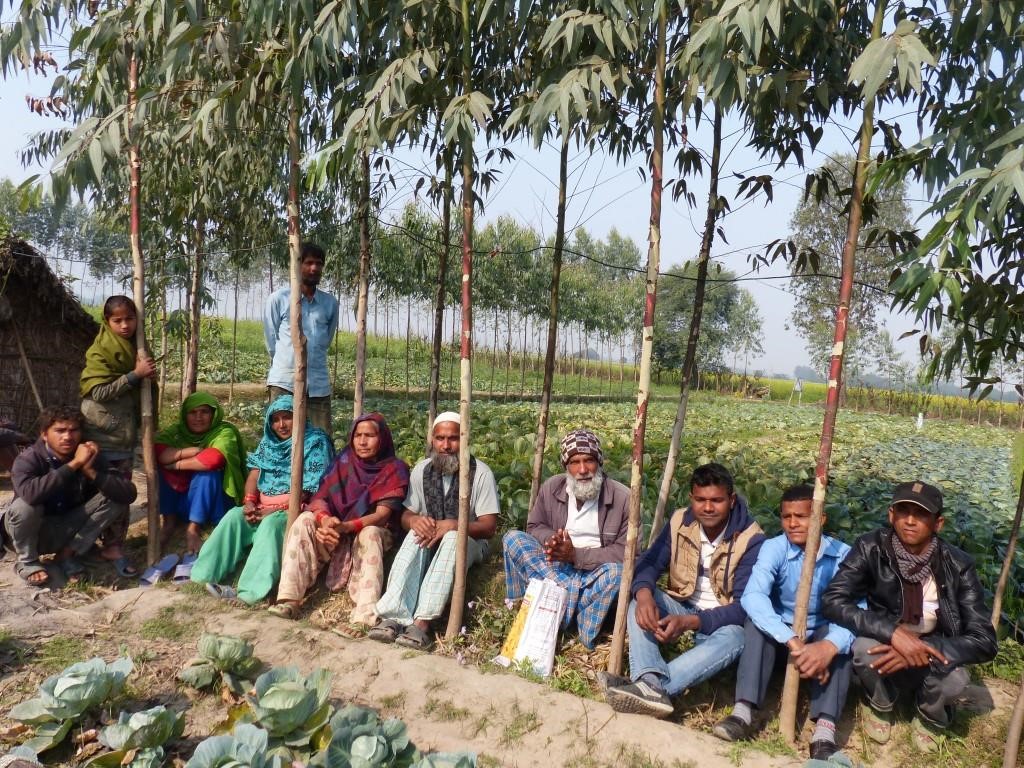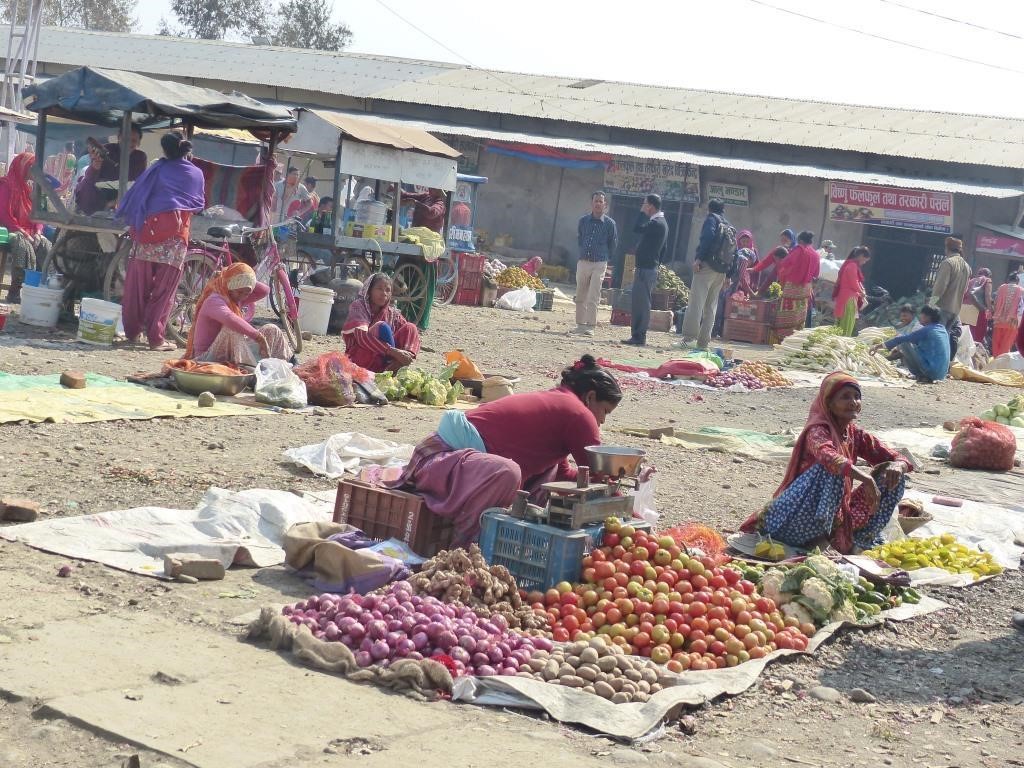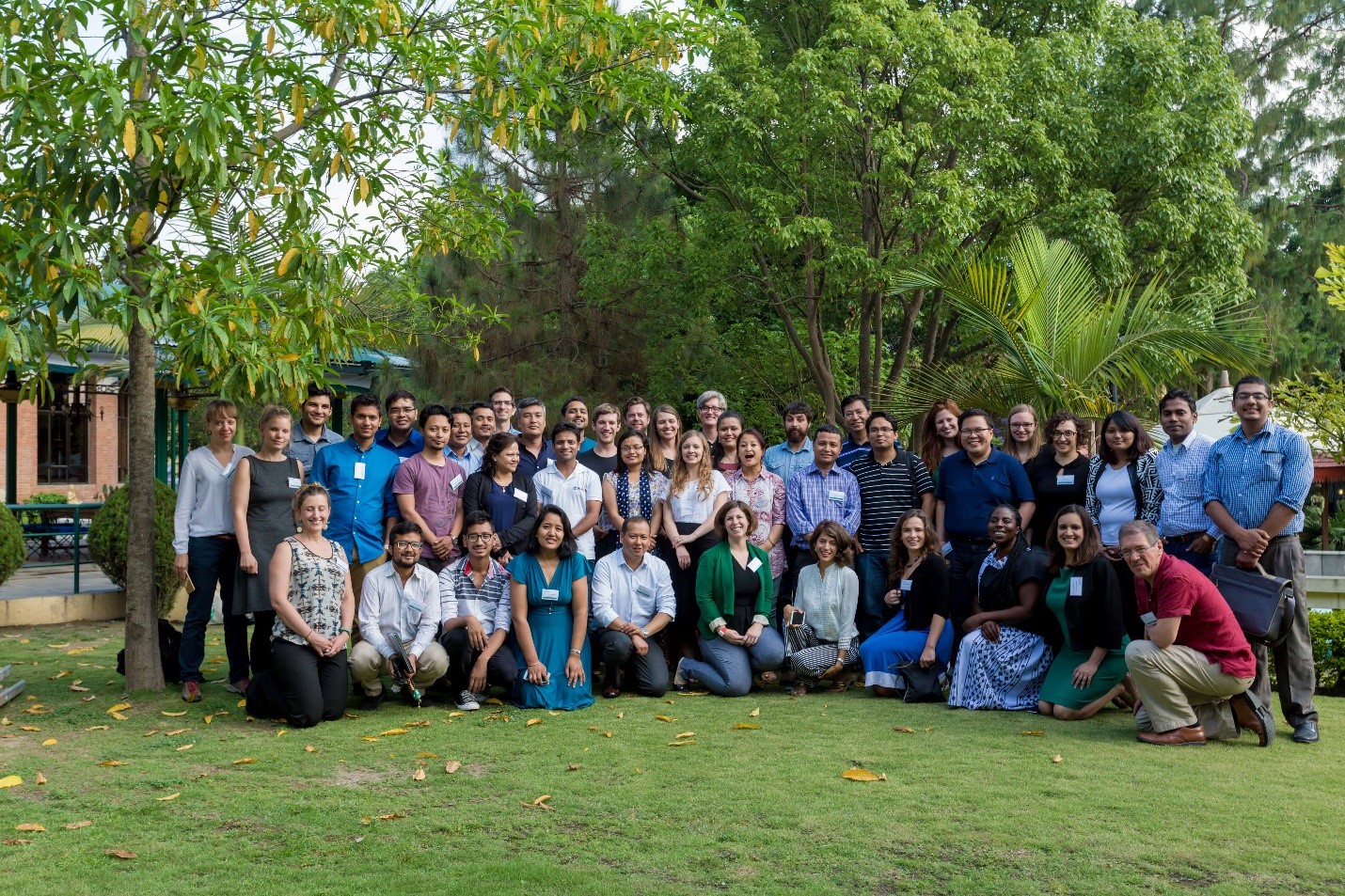Let us know what type of content you'd like to see more of. Fill out our three question survey.
HCD in the Field: Trading Counterfeit Rupees for Real Insights with Farmers in Nepal
Jul 3, 2017
This is a guest post by Meredith Perry, Innovation Specialist with DAI’s Center for Development Innovation project.
My colleague pressed $1,000 in visibly fake Nepali rupees into the hands of each farmer, inputs dealer, and agricultural entrepreneur. Then, she grandly opened the doors to our ersatz haat bazaar (an outdoor, rural marketplace) and instructed them to, “Pay what you would be willing to spend on the products.”

Inside the Data-Driven Farming Prize’s “haat bazaar.” Yes, we know inside makes this an oxymoron. Photo by Kathaharu Studios.
For two hours, the din associated with an actual marketplace poured out of a Kathmandu conference room. The Data-Driven Farming Prize’s 13 finalist teams became sellers straining to attract prospective buyers from among the invited participants. But how did data analysts, graduate students, and entrepreneurs transform into wily hawkers? Why was a simulated haat bazaar a Data-Driven Farming Prize activity?
Imagining Innovation
To take a step back, since fall 2016, DAI and our partner, Nesta, have been working alongside the U.S. Agency for International Development to design and implement Feed the Future’s Data-Driven Farming Prize. The prize seeks tools and approaches that source, analyze, and translate data into actionable, timely, and context-specific information for smallholder farmers to improve agricultural productivity. While satellite, weather, pest, and soil data have revolutionized industrial agriculture, that does not necessarily mean the insights from this data are available or comprehensible to smallholder farmers. Nepal, where nearly 70 percent of the population farms, could transform its productivity and food security bringing data-driven insights to smallholders. These insights, however, need to be communicated appropriately. While Nepal has high mobile phone penetration, less than 30 percent of Nepalis have smart phones. Only 58 percent of adults are literate. Simply asking farmers to install and check a mobile app won’t cut it.

Smallholder famers tell us about their daily lives and data needs, outside Nepalgunj in February. Photo by Nesta.
Human-Centered Design From the Start
To ensure the innovations the Data-Driven Farming Prize is seeking are relevant to Nepali smallholder farmers, DAI and Nesta have conducted continuous human-centered design processes. We started by ensuring the prize and judging criteria reflected feedback from Nepali smallholder farmers themselves. We asked farmers, extension officers, and inputs dealers if the lack of data was a problem, and, if so, what problems access to timely data might solve. We also asked questions about literacy, mobile phone ownership (and access), disposable income, and household decision-making. We then profiled these conversations in blogs so that competitors had a clear picture of their prospective customers. On the judging side, DAI and Nesta honed the criteria and made sure the Prize’s judges—including DAI’s Kristen Roggemann—noted whether the submitted solutions were responsive to the needs and daily lives of smallholders.

An actual haat bazaar in Nepalgunj, where we conducted end-user interviews. Photo by Nesta.
Of the 143 applicants, our judges selected 13 finalist teams. The Data-Driven Farming Prize put a co-creation workshop at the center of our process because we wanted to convey to competitors:
- A common understanding about the data
- The challenges and opportunities in the Nepali agriculture sector
- The needs of smallholders
- Our conviction that comprehensive, responsive, and commercially successful innovation would occur only if the competitors collaborated with experts, Nepali farmers, and each other
To reinforce this, just prior to the haat bazaar, the finalists completed an intensive Lean Start-Up session. They were reminded by mentors that early success is predicated on direct collaboration with customers and focused products and services that demonstrate responsiveness to their needs. Mentors counseled finalists to ask questions like “Is this useful to you?”; “Does this respond to a farming challenge you experience?”; and “Would you be able to integrate this into your life?”
After a flurry of questions and counterfeit rupees changing hands, the haat bazaar closed with our visitors counseling competitors on how to improve the relevance of their products.
HCD-Driven Prize Process
The competitors would do well to keep this counsel in mind. In the weeks following the workshop, they are required to test their solutions with smallholders. Our judges will prioritize smallholder feedback on the solution’s usability and their willingness to pay in their assessments. As a capstone, in early September, DAI and Nesta will reconvene our 13 finalist teams in Nepal. The teams will pitch their innovations to the judges and Feed the Future delegates, network with Nepali agriculture entrepreneurs, and participate in a second, extended haat bazaar. Along the way, the teams will demonstrate the modifications they made to make their solutions more Nepali smallholder-appropriate. But this time, instead of fake rupees, four winners will earn more than US$300,000 in prize money.

Data-Driven Farming Prize competitors, partners, and USAID at the close of the co-creation workshop in Kathmandu in May. Photo by Kathaharu Studios.